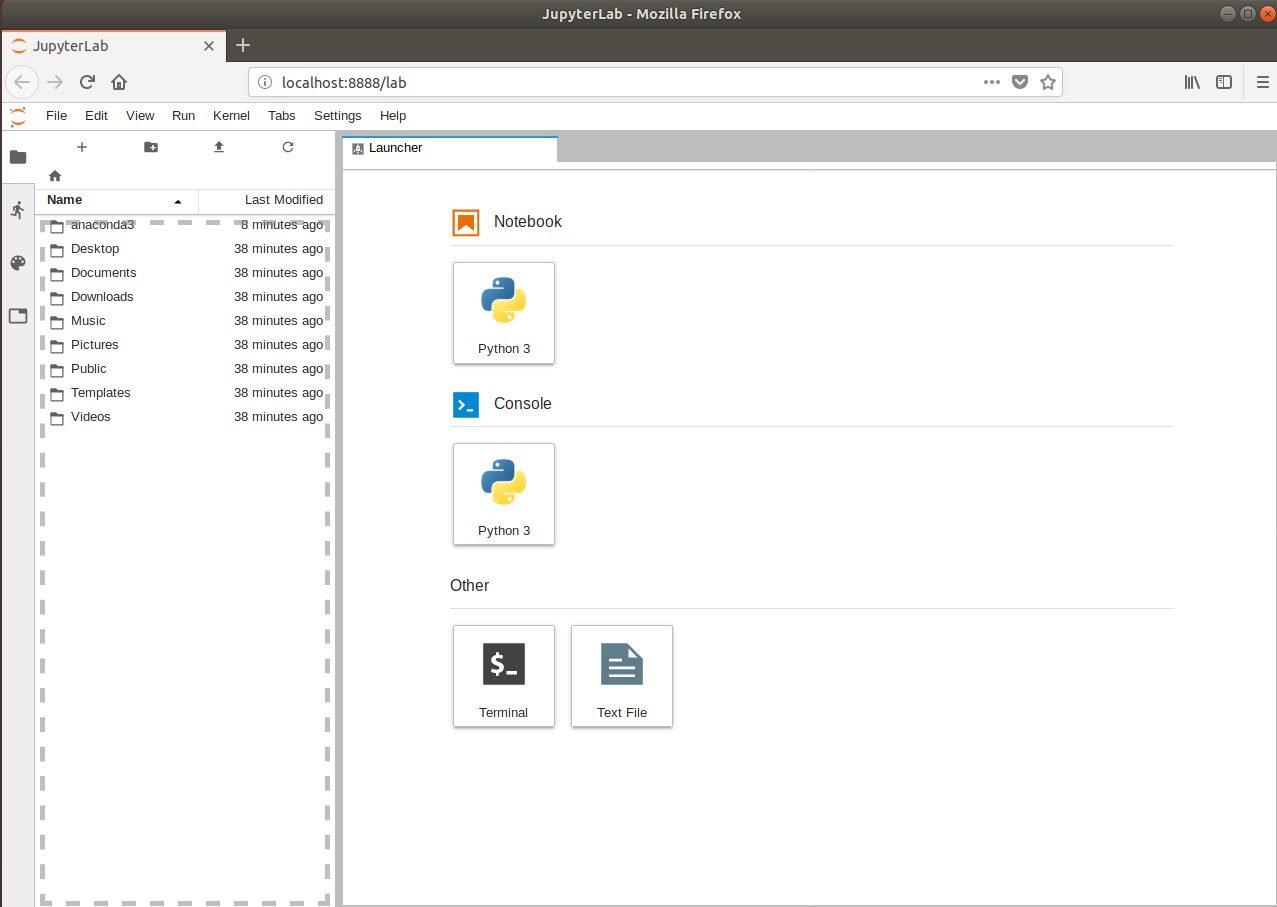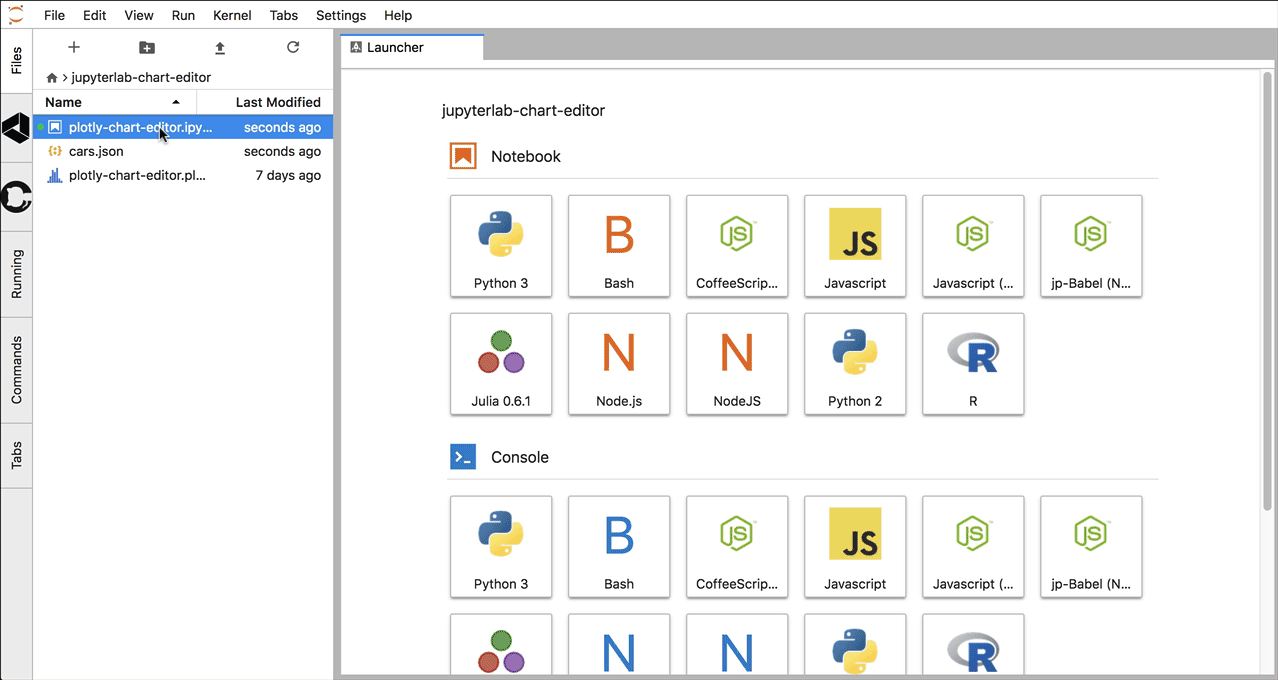
let's you export your notebook to a different format, such as pdf, markdown, etc.Įxplore the menu and see what else you can find. let's you save the currently selected notebook with a new filename.Įxport notebook as.

Open from path - opens a document from a path other than the one you started in. there are some new entries here that are specific to jupyterlab, however. most of the menu items should be familiar to you if you have used jupyter notebook. just go to **file** -> **new** and then choose the type of item you would like to create. You can also create new items by using the **menu** that runs along the top of the screen. if you do that, your screen should look something like this:
#JUPYTERLAB PLUS#
Let's open a notebook and then click the plus button. if you would like to open a second document, just click the "+" button on the left, which i have circled below: you will note that when you create a new notebook or other item that the launcher disappears.
#JUPYTERLAB CODE#
this is one place you can go to start a new notebook, code console, terminal, or text file. Initial landing page for a new jupyterlab when i ran either of these commands, i got the following initial web application: Now that we have jupyterlab installed, we should try running it. if you happen to have it installed, then you can use the following two commands to get jupyterlab:Ĭommand is required if you want to launch jupyterlab from within the virtualenv that you installed it into. Tool is a new package that can be used to create a python virtual environment and download a package into it. , then you will need to add the user-level "bin" directory to your path environment variable to be able to launch jupyterlab. If you prefer using python's native installer, pip, then this is the command you want: If you are an anaconda user, then you can use conda for installation purposes by using the following command:
#JUPYTERLAB INSTALL#
You can use conda, pip, or pipenv to install jupyterlab. this includes theming support, file editors, and more. You can add new behavior to your jupyterlab instance via extensions. you can also display rich output from these formats using various visualizations or markdown.įor navigation, you can use customizable keyboard shortcuts or key maps from vim, emacs, and even sublimetext.

Jupyterlab will allow you to view and handle multiple types of data. Multiple views of the same document - gives you the ability to live edit documents and see the results in real-time. Mirrored notebook cell outputs - this let's you create simple dashboards. Kernel-backed documents - these allow you to enable code in any text file (markdown, python, r, etc.) that can then be run in the jupyter kernel. you might say jupyterlab is a more powerful version of jupyter notebook.Īnyway, here are a few of the things that jupyterlab is capable of:Ĭode consoles - these are coding scratchpads that you can use for running code interactively, kind of like python's idle. i like to think of jupyterlab as a kind of web-based integrated development environment that you an use to to work with jupyter notebooks as well as using terminals, text editors, and code consoles. however the jupyter notebook is a separate project from jupyterlab. in some ways, it is kind of a replacement for jupyter notebook. Is the latest package from project jupyter.


 0 kommentar(er)
0 kommentar(er)
